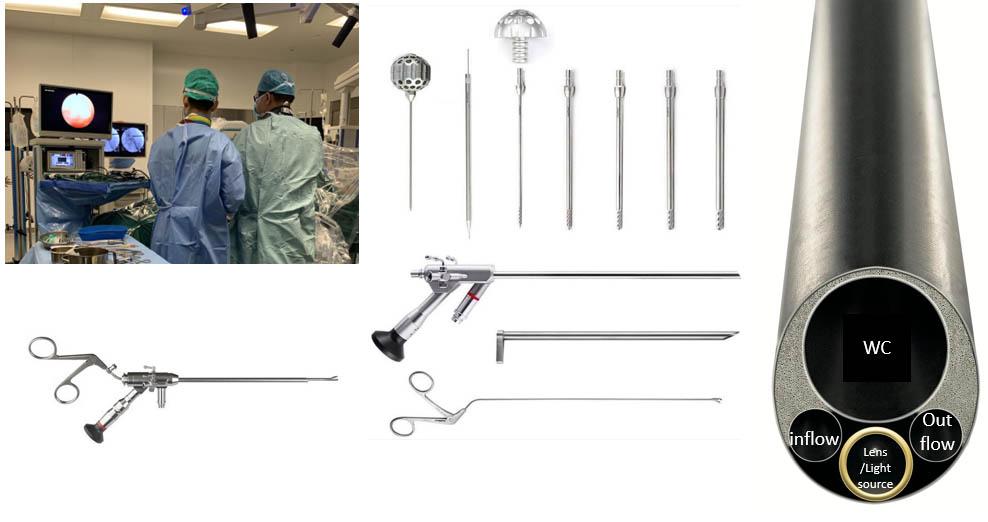Spine Pain and Injury Treatment

An active lifestyle relies on the support and flexibility of a healthy spine. However, unexpected events can leave you hurt, injuring your spine. Many on this journey have faced frustration, tirelessly seeking answers to alleviate spine pain and reclaim control.
If you’re one of them, it’s time to consider a spine injury treatment.
What are the types of spinal injuries?
The spine is a complex structure comprising different sections that play crucial roles in supporting the body. Understanding the distinct types of spinal injuries is essential for proper diagnosis and treatment.
Cervical spine injury
The cervical spine, positioned in the neck, is prone to injuries that can affect mobility and sensation in many body areas.
Thoracic spine injury
Injuries to the thoracic spine in the upper and mid-back can affect the chest and abdomen, potentially influencing organ function.
Lumbar spine injury
The lumbar spine, found in the lower back, is a common site for injuries, often leading to discomfort and limitations in movement.
Sacral spine injury
Injuries to the sacral spine, at the base of the spine, may impact the hips, buttocks, and lower extremities.
How is spine pain & injury diagnosed?
Accurate diagnosis is crucial for tailoring effective treatment plans. Spine specialists employ various diagnostic methods, including a review of your medical history, imaging tests and physical examinations, to help identify the extent and nature of spinal injuries.
Medical history
- Information about the individual’s overall health, previous injuries, and any existing medical conditions.
- Details about symptoms’ onset, progression, and factors exacerbating or alleviating them are crucial.
Physical examination
- A thorough physical examination assesses the range of motion, strength, reflexes, and sensory function.
- The doctor may check for signs of nerve damage or spinal instability.
Imaging tests
- X-rays: Provide detailed images of the bones in the spine, helping identify fractures, dislocations, or degenerative changes.
- CT Scan (Computed Tomography): Offers cross-sectional images, helpful in assessing bony structures and detecting fractures.
- MRI (Magnetic Resonance Imaging): Produces detailed images of soft tissues, including the spinal cord, nerve roots, and discs, aiding in diagnosing injuries or abnormalities.
Other diagnostic tests
- Additional tests like electromyography (EMG) or nerve conduction studies may be performed to assess nerve function depending on the suspected injury.
What are the treatment options for spine pain & injury?
Non-Surgical Treatments
Non-surgical treatments for spine injuries are often considered a first line of intervention when the injury is less severe or doesn’t require immediate surgical intervention.
- Physical therapy: Strengthening muscles, improving flexibility, and promoting overall spinal health.
- Medications: Prescription of drugs for managing pain, inflammation, and muscle spasms.
- Pain management interventions: Alleviating pain through procedures like pain injections or radiofrequency ablation.
- Bracing: External support to the spine promotes healing and prevents further damage.
Lifestyle modifications: Adopting habits and practices that reduce strain on the spine, such as maintaining a healthy weight and practising proper ergonomics.
Surgical Treatments
Surgical treatment for a spine injury is considered when non-surgical interventions have proven ineffective or when the nature and severity of the injury require more immediate and decisive measures. With advancement of technology, many of the spine injury treatment can be performed using minimally invasive methods to reduce collateral damage to soft tissue and minimize blood loss and length of hospital stay after treatment. This can be done using endoscopic spine surgery , navigation technology and modified retractor system to augment the way we treat spinal injuries. Some of the surgeries are listed below, most of them can be performed by minimally invasive methods in our experience.
- Discectomy: Removal of herniated or damaged disc material that may compress nerves.
- Spinal fusion: Stabilising the spine by fusing vertebrae using bone grafts or implants.
- Laminectomy: Creating space in the spinal canal by removing the lamina (back part of a vertebra).
- Foraminotomy: Enlarging the passageway for nerve roots by removing bone or tissue.
- Vertebroplasty or kyphoplasty: Stabilising fractured vertebrae by injecting bone cement into the affected area.
- Disc replacement: Substituting a damaged or degenerated disc with an artificial one to maintain spinal motion.
- Spinal decompression surgery: Relieving pressure on spinal nerves or the spinal cord.

Symptoms that may indicate the need for spine pain treatment
Recognising the signs and symptoms of a spinal injury is critical for obtaining medical assistance as soon as possible. See a doctor if you experience the following symptoms, which may suggest underlying spine concerns.
- Persistent or severe back pain
- Numbness or tingling
- Weakness or difficulty moving
- Changes in bowel or bladder function
- Radiating pain
- Loss of sensation
- Difficulty maintaining balance
- Shooting or electric shock-like pain
- Progressive weakness
- Difficulty walking
Any unexplained or concerning symptoms related to the spine should be discussed with a spine specialist. Early intervention can significantly improve the outcome of spine injury treatment.
How long is the recovery period after spine injury treatment?
The recovery period varies depending on the type of injury and the chosen treatment approach. Non-surgical methods may take days to weeks to see an improvement, while recovery from surgery may take months to heal fully. Patience and adherence to rehabilitation plans are essential for a successful recovery.
Spine pain & injury treatment in Singapore
Navigating the challenges of spinal injuries requires a holistic understanding of their types, diagnosis, and treatment options. You can work towards recovery and improved well-being by staying informed and seeking timely medical attention.
Achieve Orthopaedic and Spine Centre specialises in orthopaedic and spine care, providing comprehensive treatment options for various spine pain and injuries. Our specialists are experienced in non-surgical and surgical interventions tailored to your needs.
Book a consultation with us for an evaluation of your spine injury.
Frequently Asked Questions (FAQs)
Spinal injuries can result from various causes, including accidents, falls, and degenerative conditions.
Seeking emergency medical attention is crucial. Avoiding movement and supporting the head and neck can prevent further damage.
The permanency of spinal injuries depends on the severity and type of injury. Some wounds may heal with proper treatment and rehabilitation.
In severe cases, spinal injuries may lead to paralysis. Prompt medical intervention is crucial to minimise the risk.
Complications may include chronic pain, muscle weakness, and potential impacts on organ function, emphasising the importance of comprehensive treatment.
Assistive devices, such as braces, wheelchairs, and mobility aids, can support your recovery and daily life.
